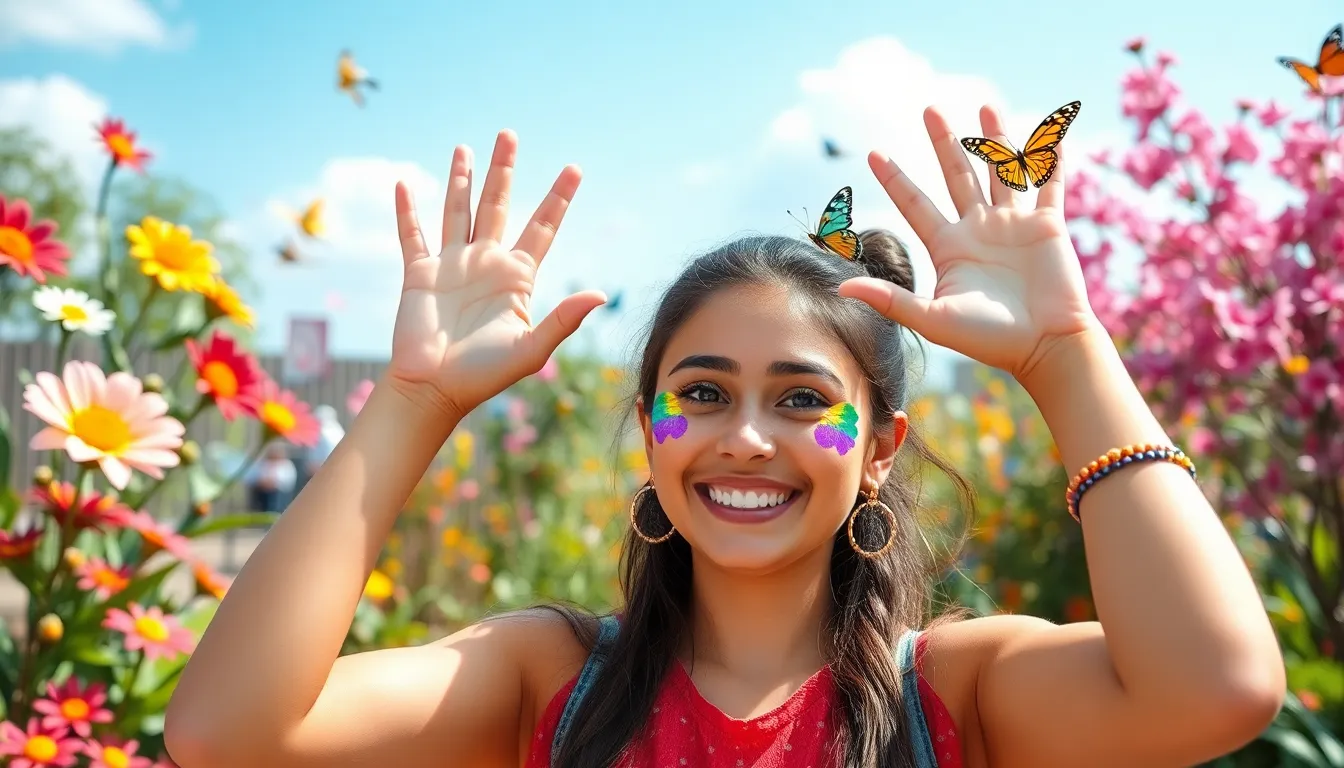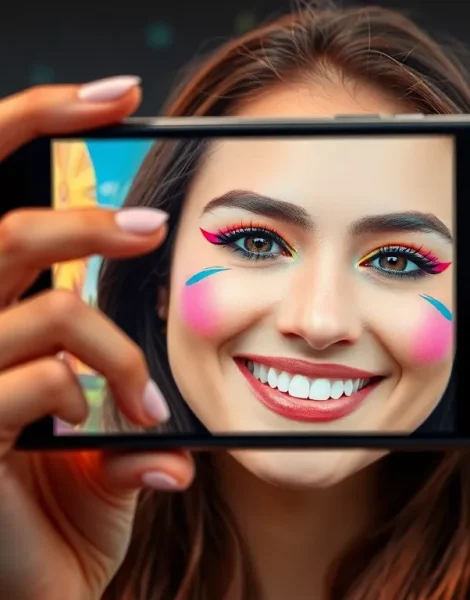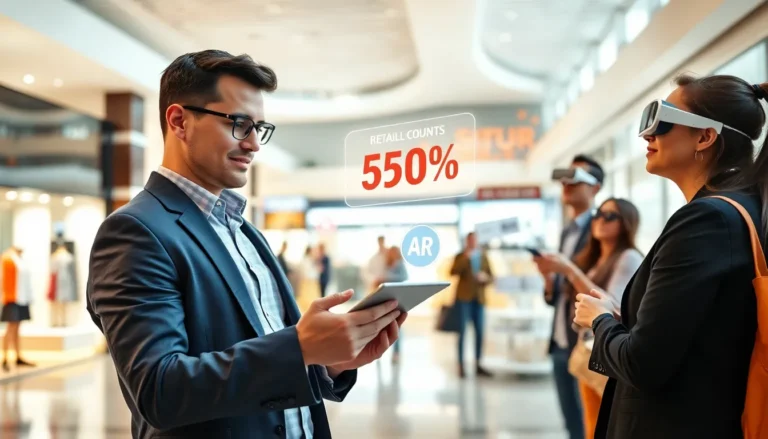In a world where reality can sometimes feel a bit too ordinary, AR filters swoop in like superheroes, transforming mundane moments into magical experiences. From turning a simple selfie into a whimsical masterpiece to adding a sprinkle of fun to video calls, these digital wonders have taken social media by storm. With just a tap, anyone can become a playful puppy or a glamorous movie star, leaving friends wondering if they’ve stepped into a sci-fi flick.
But it’s not just about fun and games. AR filters are reshaping how brands engage with their audience, creating interactive experiences that leave a lasting impression. Whether it’s a cheeky pair of sunglasses or a fantastical background, these filters are more than just a gimmick—they’re a powerful tool for connection. Dive into the world of AR filters and discover how they’re changing the way we see ourselves and each other, one pixel at a time.
Table of Contents
ToggleOverview of AR Filters
AR filters represent a significant advancement in digital interaction. They layer digital information over real-world images, providing engaging visual enhancements. Users can modify their appearance or environment, creating captivating experiences on platforms like Instagram and Snapchat.
These filters utilize facial recognition technology to assess features, enabling unique transformations. Users access a wide array of options, including animated effects, background changes, and cosmetic edits. The versatility of AR filters encourages social sharing, allowing users to connect through humor and creativity.
Brands increasingly adopt AR filters to enhance marketing strategies and engage consumers. Companies develop custom filters to complement product launches or promotional events. Campaigns featuring AR filters often lead to higher engagement rates as they invite users to interact with the brand.
Statistics reveal a growing demand for interactive content. Reports indicate that AR experiences can increase user engagement by over 70%. Marketers recognize the value of capturing user attention through immersive experiences.
Innovations in AR technology continue to push boundaries. Advances allow for more realistic and intricate filters, improving user experience. As AR filters evolve, their influence on self-expression and online communication expands. With each new filter, users explore different aspects of identity, making digital interactions richer and more meaningful.
Types of AR Filters

AR filters can be categorized into different types, each offering unique experiences for users. These categories enhance engagement and contribute to creative self-expression.
Face Filters
Face filters transform users’ appearances by applying effects to their faces in real-time. Features like virtual makeup, animated characters, or accessories create playful personas. Popular on platforms such as Instagram and Snapchat, these filters utilize facial recognition technology for smooth integration. Users can share their modified images or videos easily, inviting interaction and laughter. Statistics reveal that face filters significantly boost the likelihood of users sharing content, making them a pivotal tool for brands targeting younger demographics.
Environment Filters
Environment filters change the backdrop of a user’s surroundings, immersing them in different settings. Users might find themselves in a vibrant garden, a bustling city street, or even outer space. These filters layer digital graphics over real-world images, creating captivating environments. Platforms enhance storytelling by allowing users to transport themselves to imaginative locales. Research indicates that environment filters elevate user engagement, with many users posting their adventures to social media. Such filters encourage exploration and creative interactions, enriching online experiences.
Interactive Filters
Interactive filters engage users in dynamic experiences that respond to their movements or actions. Users can play games, participate in quizzes, or engage with animated characters, introducing immersive elements. These filters often incorporate gamification, prompting users to complete specific challenges or tasks. Data shows that interactive filters foster longer session durations on social media, as users continuously explore what these features offer. Businesses leverage these filters for marketing campaigns, creating compelling engagement that resonates with audiences.
Impact of AR Filters on Social Media
AR filters significantly enhance user engagement and brand marketing on social media platforms. They create memorable experiences that encourage interaction among users.
User Engagement
User engagement skyrockets with AR filters, captivating audiences in innovative ways. Studies show that AR experiences can elevate engagement rates by over 70%. Unique filters encourage users to share content, fostering a sense of community and connection. As individuals explore different filters, they invite their friends to join the fun, amplifying social sharing. Users also find joy in creating personalized content and showcasing their creativity. Diverse options ensure there’s something for everyone, which propels more interactions across platforms.
Brand Marketing
Brands harness the potential of AR filters to elevate marketing strategies. Custom filters promote product launches, engaging audiences in immersive experiences. Brands report higher engagement rates when using AR content, proving its effectiveness in capturing attention. Creative campaigns often feature limited-time filters, drawing users in and igniting curiosity about products. Additionally, AR filters foster deeper connections between brands and consumers, as users feel a sense of involvement. Brands that leverage AR technology stand out in a crowded market, enhancing their visibility and relatability.
Popular AR Filter Platforms
Augmented reality filters have gained immense popularity on various platforms, allowing users to express themselves creatively. Here’s a look at the leading platforms that leverage AR technology.
Instagram is a front-runner in the AR filter space. Users can access a wide range of face filters and interactive effects designed to enhance their images and videos. Brands frequently create custom filters for product promotions, resulting in heightened user engagement. Engagement levels soar, with statistics showing a significant increase when brands use AR filters. The platform’s Stories feature allows users to share these immersive experiences, fostering community connections. Diverse options encourage users to experiment, amplifying the appeal of both personal and branded content.
Snapchat
Snapchat revolutionized the way users interact with AR filters. Known for its unique face filters and lenses, the platform delights users with real-time transformations. Custom-branded lenses enhance marketing campaigns, making interactions memorable and shareable. Users engage with lenses often, reflecting their popularity and effectiveness in boosting brand awareness. Snapchat’s emphasis on playful AR experiences connects friends, encouraging sharing and creating a sense of community. Analytics indicate that branded lenses generate significant user interaction, underscoring their strategic importance in social marketing.
TikTok
TikTok integrates AR filters seamlessly into its video-sharing platform. Users can leverage various effects, from custom animations to fun facial filters, enhancing their creative expression. The platform’s trend-driven nature encourages widespread sharing, with filters often going viral. Engagement rates rise as creators utilize AR filters to attract viewers and foster engagement. Brands that create unique challenges or effects often see increased visibility, tapping into TikTok’s vast audience. The ephemeral nature of TikTok content drives consistent use of AR filters, allowing users to explore identities and narratives dynamically.
Future Trends in AR Filters
Developments in AR filters indicate significant advancements on the horizon. Personalization features are gaining traction, allowing users to create customized filters that reflect individual preferences. Increasingly, brands incorporate user-generated content into their marketing strategies, enhancing relatability and authenticity.
Integration with e-commerce platforms represents a notable trend. AR filters let consumers virtually try on products, providing a more engaging shopping experience. This approach can lead to higher conversion rates, as customers feel more confident in their purchasing decisions.
Additionally, the rise of artificial intelligence in filter development enhances user experience. AI algorithms offer real-time adjustments that respond to a user’s facial expressions and movements. This technology creates a seamless interaction, making filters more intuitive and enjoyable.
Cross-platform functionality is also becoming essential. Users appreciate the ability to access and use filters across different social media platforms. Efforts to streamline this process improve accessibility and encourage users to explore new creative possibilities.
Gamification elements continue to evolve within AR filters. These features engage users by offering interactive challenges that reward creativity and participation. Brands find that this kind of engagement fosters community involvement, as users share their experiences and invite friends to join.
The future of AR filters appears increasingly collaborative. Social media influencers and content creators play pivotal roles in shaping filter trends. Their insights help brands create filters that resonate with target audiences, ensuring successful marketing efforts.
Overall, emerging trends in AR filters emphasize personalization, integration with retail, advanced technology, platform accessibility, gamification, and collaboration. These trends enhance user engagement, making the experience more vibrant and accessible.
AR filters have revolutionized the way users interact with their digital environments. They not only enhance personal expression but also create unique opportunities for brands to connect with audiences. As technology advances and personalization becomes more prevalent, the potential for AR filters will only grow.
The future promises exciting innovations that will further enhance user engagement and foster community connections. With their ability to transform ordinary moments into shareable experiences, AR filters are set to remain a staple in social media interactions. Embracing these trends will ensure users and brands alike stay at the forefront of this dynamic digital landscape.









